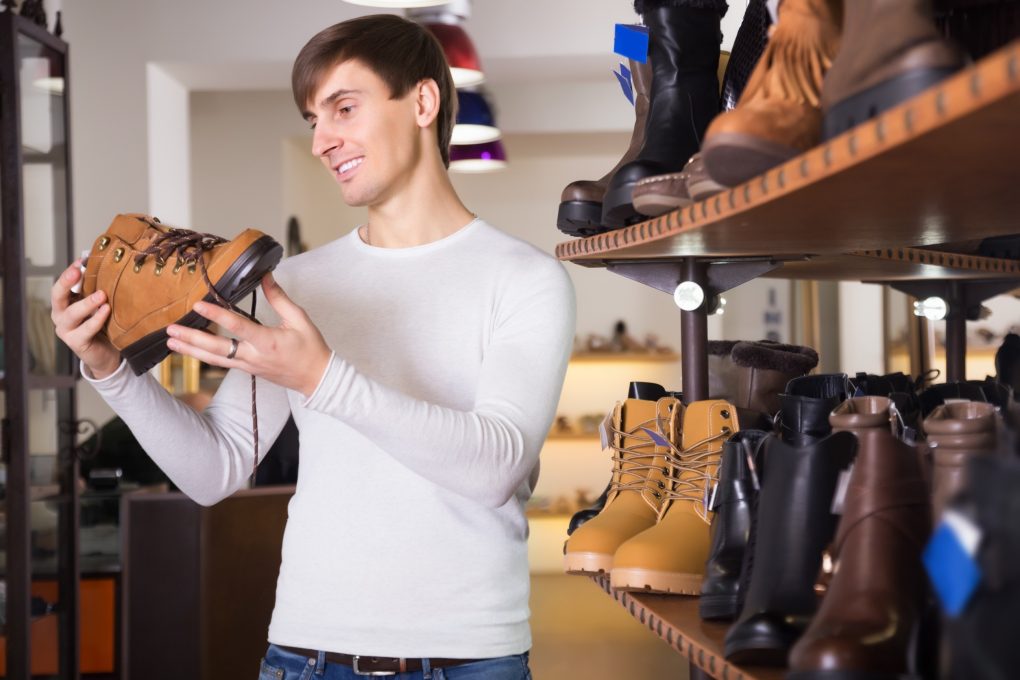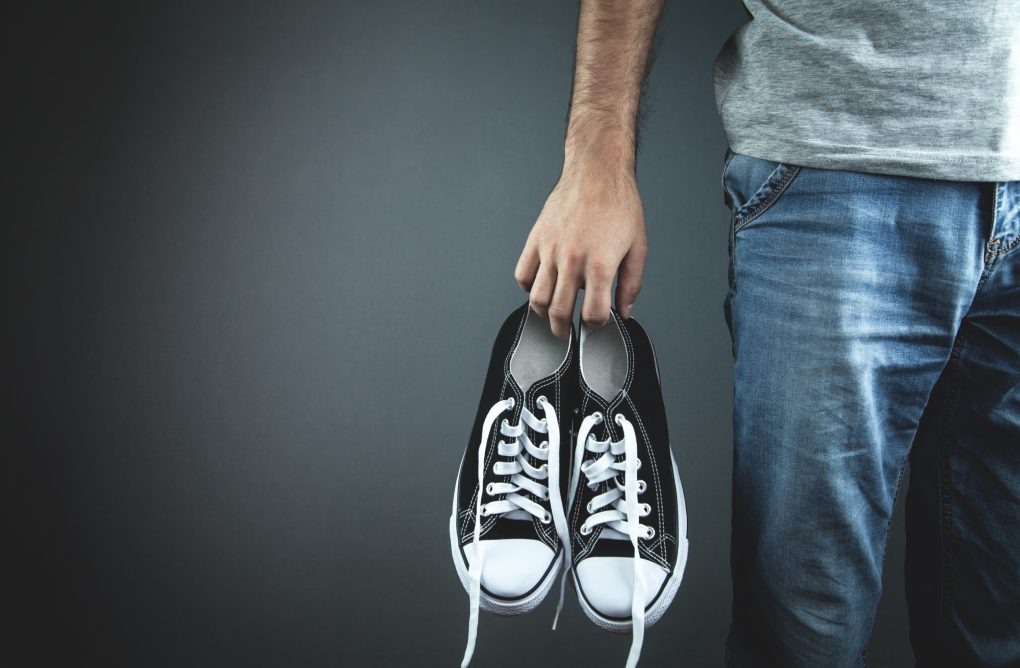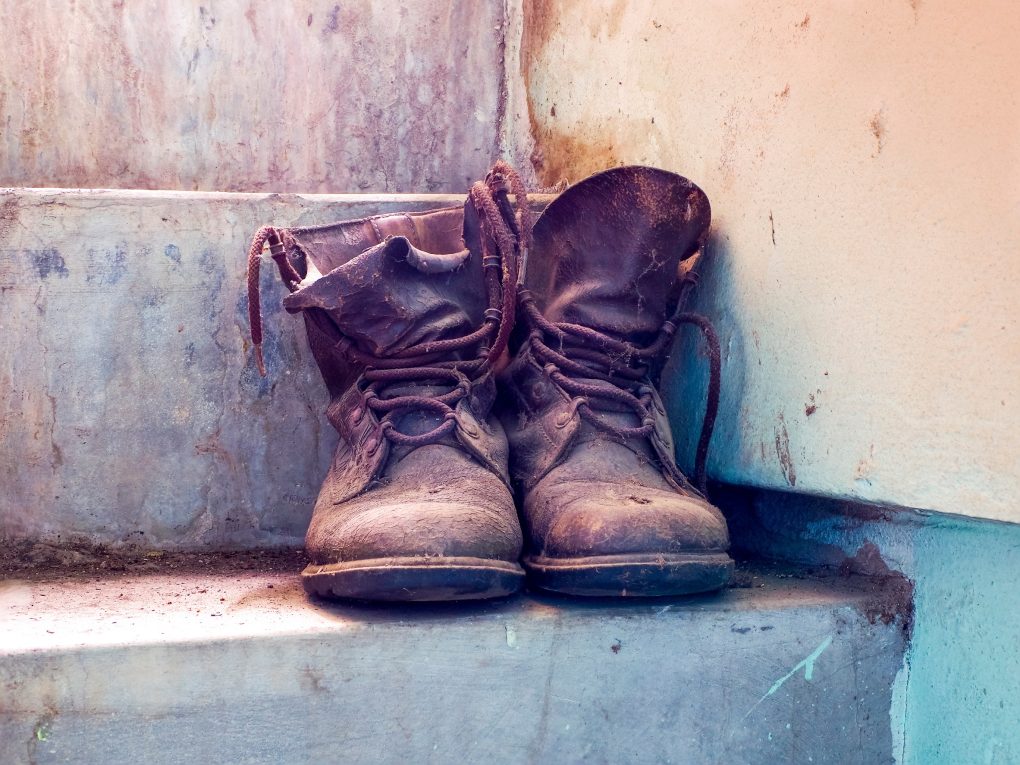How Long Do Shoes Last: Signs Your Shoes Are Worn and How to Prolong Longevity
Shoes last 8-12 months on average. Some factors determine the lifespan of shoes: the type of material they’re made from, the amount of use they get, the type of shoes they are, and the height of the shoes. For shoes made from synthetic materials, it’s important to remember that they will last shorter than shoes made from natural materials. As long as you’re taking good care of your shoes, they should last a long time!
Signs That Your Shoes Are Worn Out
Excessive Creasing
Excessive creasing is the result of shoes rubbing against one another, as well as against your ankle. This causes the shoe’s surface to wear down quickly, resulting in prominent creases.


You can tell if a pair of shoes is past its prime by how much color has faded and how many wrinkles have formed. It’s also important to replace shoes every couple of months or sooner if they show signs of wear and tear. Doing so will help keep them looking new for longer, preventing excessive creasing from occurring in the first place!
Shoes Feel Flat
When your shoes feel flat, it’s a sign that they’re worn out. The feeling of a flat shoe can be caused by the loss of cushioning in the insole or sole of the shoe, which can happen over time as the shoes are worn, and the materials break down. However, it can also be caused by factors such as the type of shoe, the kind of surface being walked on, or how the shoes are worn.
Shoes may also squeak when you walk or be challenging to put on. This usually indicates the thin treads and the glue holding them together having lost its strength. It would help if you replaced your shoes as soon as possible to avoid further issues.
Your Performance Is Off
If you’re experiencing pain when you walk or run, your feet sweat more, and the skin becomes dry and cracked. Rubber starts to wear down quickly, leading to footwear instability – making them less effective at cushioning your foot during exercise.
If you feel that your performance is off and you suspect that it might be related to your shoes, it is a good idea to assess the overall condition of the shoes. Look for signs of wear and tear, such as holes, tears, or frayed edges, and any loss of support or stability. If the shoes are in good condition, consider other factors affecting your performance, such as your training and conditioning or the type of activity you are doing.
Inexplicable Pains
You can do a few things to reduce the pain you experience when shoes don’t fit properly. For example, if your feet or ankles tend to hurt when you wear shoes that are too tight or too big, it is best to take them off and try them on in different sizes. It’s also a good idea to replace shoes every 3-6 months, depending on the type of shoe you’re wearing.
If pain persists despite following these simple tips, it might be worth visiting a doctor for an evaluation. Doctors can perform tests such as X-rays or scans to rule out any other possible causes of your discomfort and find the most effective way of treating it.
Torsional Rigidity
According to Footwear Science, torsional rigidity is when the feet twist, leading to shoes wearing out much faster than expected. The torsional rigidity of a shoe can be affected by various factors, including the materials used in the shoe’s construction, design, and overall condition. As shoe age and are worn over time, the materials used in their construction may break down and become less able to resist deformation.
Such a lack of resistance to deformation can cause injuries as well as reduced efficiency and productivity. To tell if your shoes have reached the end of their useful life, try putting them on and walking around for a few minutes. If they give you any pain or discomfort, it’s time to replace them!
Visible Wear and Tear
Shoes will show wear and tear after around 6-8 weeks of regular use. The toe box, heel, seams, and treads will all be affected differently. Some common signs of wear and tear in shoes include holes, tears, or frayed edges in the upper or sole of the shoe, a loss of support or stability, or a loss of cushioning or comfort.
You may also start to see water retention in the shoes, which means they are no longer waterproof. To save your shoes, it is best to give them a break every six months and replace them when necessary.
Tips to Make Shoes Last Longer


Choose the Right Fit
When it comes to shoes, choosing the perfect pair that will fit well and last long is essential. Too many people tend not to take care of their footwear, resulting in them wearing out quickly or breaking down completely.
Make sure you select the right size for your shoes and feet type – running sneakers or dress shoes, for instance, as opposed to ordinary sneakers, which you can use in both cases. Also, make sure your sneakers are properly cleaned every time you wear them – this will prevent dirt, dust mites, and other allergens from accumulating over time which can damage the fabric of the shoe.
Rotate Between Shoes
It is important to rotate between shoes so that the insole and shoe material can adapt to your foot. Wearing the same pair of shoes daily can cause them to wear out more quickly. Rotating between different pairs allows each pair to rest and helps to distribute the wear and tear more evenly, potentially extending the life of your shoes.
After a few weeks, it is time to switch out pairs of shoes as they will start wearing out faster. Try not to wear them in wet or humid conditions, as this could further damage them.
Take Care of Your Shoes
Shoes are an essential part of any outfit; as such, it is vital to take care of them. Make sure they are always kept in a dry and dark place, avoid wearing them in hot or cold weather conditions, and replace them when they show signs of wear. Use a soft cloth instead of harsh cleaners to clean shoes properly without damaging their leather.
If your shoes are made of leather, it is a good idea to condition them regularly to keep the leather supple and prevent it from drying out and cracking. Instead, use a leather conditioner according to the manufacturer’s instructions.
In addition, the insoles of your shoes can become worn or damaged over time, affecting the fit and comfort of the shoe. For example, if the insoles of your shoes show signs of wear, consider replacing them.
Wear the Right Shoes for Different Activities
When it comes to shoes, it is essential to find the right pair for your activity. For instance, if you plan on running in sneakers, you need a different pair of running shoes than walking or hiking. Likewise, if your shoes are meant for indoor rather than outdoor use, switch them out when necessary.
Try on shoes before buying them; this will help ensure that they fit perfectly and do not come loose during wear. Please do not wear your new shoes in wet conditions as this can damage them. Finally, store your shoes in a cool and dry place so they last longer!
Keep Your Shoes Away From Moisture
Keeping your shoes in good condition is essential for their lifespan. Make sure to store them in a cool, dry place and avoid wearing them in the rain or when it’s wet outside – this will ruin them quickly. If you do get wet, make sure to air-dry them thoroughly before putting them back on. Cleaning your shoes can be done with mild soap and water – avoid using harsh chemicals or solvents as they may damage the leather.
Use Shoe Trees
Shoe trees are a great way to keep your shoes organized and off the floor. Shoe trees are inserts placed inside shoes that are not worn to help maintain their shape and prolong their life. They are typically made of wood, plastic, or metal and are designed to fill out the shoe’s interior and hold it in its proper shape.
There are several benefits to using shoe trees:
- They help to prevent creases and wrinkles: When shoes are worn, the heat and moisture from the feet can cause the leather to wrinkle and crease. Shoe trees help to prevent this by holding the leather in its proper shape and preventing creases from forming.


- They help to absorb moisture: Shoe trees can help to absorb moisture from the inside of the shoe, which can help to prevent odor and keep the shoes dry.
- They help to extend the life of your shoes: By maintaining the shape of the shoes and preventing creases and wrinkles, shoe trees can help prolong your shoes’ life.
- They can improve the fit of the shoes: If your shoes become distorted or stretched out over time, shoe trees can help to restore their original shape and improve the fit.
Keep Your Soles Clean
Keeping your shoes clean is essential for hygiene and protecting the leather from drying out. Follow these simple tips to ensure that your shoes are always in good condition:
- Always clean your shoes after every use – even if you only walked in the rain!
- Use a shoe-cleaning brush to scrub the soles clean.
- If your shoes are filthy, soak them overnight in water and baking soda.
- To protect the leather from dryness, coat them with a light layer of polish or wax every few months.
Determining if You Should Throw Your Shoes
Check the Outsole
Regularly checking the outsole of your shoes will help you ascertain how often they have been worn and what their lifespan might be. It is also a good indicator of whether or not the shoe needs to be better maintained in terms of its seams, closures, and tread.
Look for signs of wear and tear on the outsole, such as holes, cuts, or tears. If you notice that the shoe is slipping or sliding more than usual, it could be a sign that the outsole is worn out and no longer providing sufficient traction.
If the shoe is less cushioned or comfortable than it used to be, it could be a sign that the outsole is worn out and no longer providing sufficient cushioning. In addition, if the outsole of the shoe is visibly deformed or distorted, it could be a sign that it is worn out.
Check the Midsole
The midsole of a shoe is the layer between the outsole and the insole that provides cushioning and support. Over time, the midsole can become worn and need to be replaced.
Always inspect the midsole for wear and tear, checking for dents or cracks. Creases in the upper and lower part of your shoes might also mean they have been worn frequently. It’s always a good idea to replace your shoes every two years on average – this way. You can ensure that your footwear is in good condition and provides optimum comfort.
Check the Interior
Whenever you put on your shoes, it is essential to check for wear and tear. This includes checking the soles as well as the interior of the shoe. The linings of your shoes can become worn or damaged over time, affecting the fit and comfort of the shoe. Look for signs of wear, such as holes, tears, or frayed edges, and consider replacing the linings if necessary.
If there are any significant signs of damage, it’s time for a new pair! It is also essential to keep an eye out for shoes that have dried out or been wet for a long time – this can cause them to rot and deteriorate.
Check the Upper Wear
To determine when shoes are due for replacement, look at the upper wear – in other words, see how much of the shoe has been used up. This will help you decide whether to replace your pair soon or wait until they expire.
It’s always best to dispose of old or damaged footwear as doing so reduces foot fungus and other health risks associated with wearing old sneakers or sandals. Make sure to mark down the purchase date if there are any questions later on!